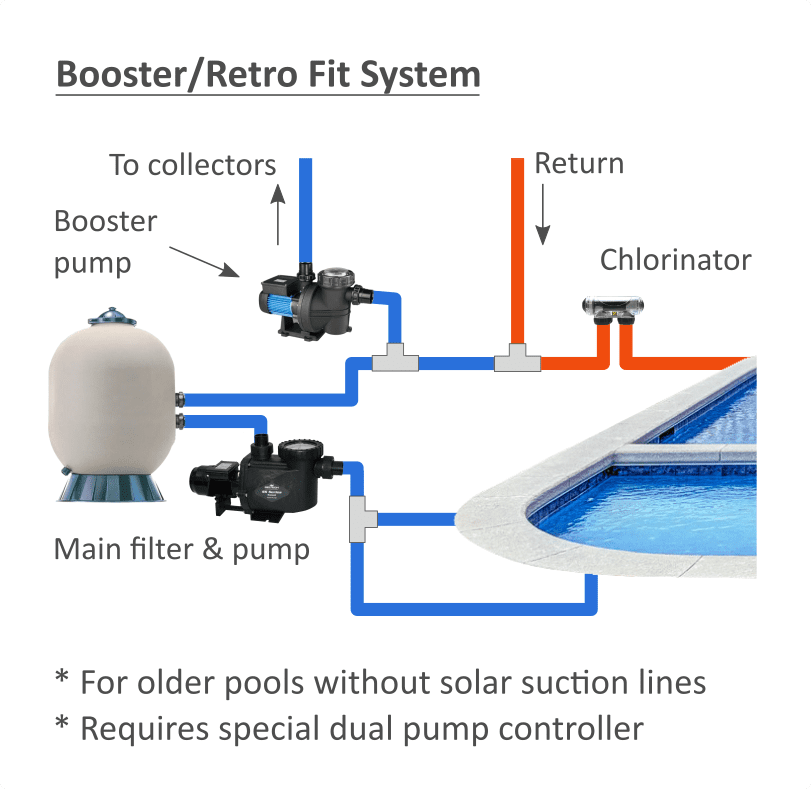Solar Pool Heater System Plumbing Configurations
Consider what kind of plumbing system you may have or want to set up for the solar side. We always recommend solar pool heaters be run on an Independent Systems, see plumbing diagram below. These systems run a small independent pump, typically for 8 hours per day and are actually more energy efficient than systems running through the main filter pump which have to run the large filter pump for 8 hours per day just to pump the solar side. Of course independent systems require separate solar suction and return lines, whereas for older pool these might not have been installed. If that's the case you'll need to go with a plumbing configuration that taps into your existing filter return line to divert water to your roof. There are a few configurations that can be chosen, see below. Most people that do not have independent solar suction and return ports will choose a Manual/Timer System and place the main filter pump on a timer to run during the warmest part of the day. These manual systems can be automated down the track however keep in mind the controller and motorized ball valve set is expensive. We have three class of listings:
- "Automatic Kit" - can be used to set up an Independent System or Integrated-Independent System - includes a solar controller (pump sold separately)
- "Manual Kit" - runs through the filter lines, can be used to set up a Manual/Timer System with a 3-way and non-return PVC ball valve (can be motorized/automated later)
- or just collector "Replacement Kit" - for people that just need to replace their old PVC tube collectors on the roof
If you need to set up a specialized system like for a Booster/Retro Fit System (requires AquaSmart 5 FS or CD controller) or the Motorized Ball Valve System (requires AquaSmart 5 AV controller), please contact us at EcoOnline.




